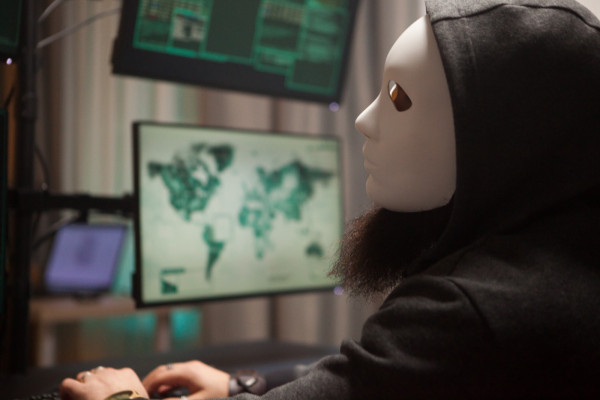Augmented reality (AR) has emerged as a groundbreaking phenomenon that has the power to transform the very fabric of our everyday lives. Far from being a mere trend, AR has emerged as a technological force that’s reshaping how we engage with the world around us. Augmented reality is a leap beyond mere screen interactions, and it’s poised to redefine our digital experiences by seamlessly intertwining the virtual and real worlds.
Let’s embark on a journey into the realm of augmented reality and explore its multifaceted influence on our daily existence, all while looking ahead to the untapped potential it holds.
The Essence of Augmented Reality
Augmented reality enhances our physical world by superimposing virtual features onto it, allowing us to interact with both physical and digital layers simultaneously. As per a Statista report, the number of global AR users is poised to reach 1.7 billion by 2024 (Source: Statista).
AR does not replace reality with a digital facade but enriches our everyday experiences by offering new ways to perceive and engage with the world we know.
Evolution of User Experience
The journey of user experiences in technology has been a remarkable one. We’ve transitioned from text-based interfaces and basic commands to AR, which offers interactive experiences that seamlessly integrate with our natural behaviors.
Traditional input devices like a mouse and keyboard have been supplemented by the intuitive interactions of AR, where a mere glance or gesture can command your digital world.
AR has truly redefined user experience by making it more natural and technologically advanced.
AR in Digital Platforms
Augmented reality has left its mark on the digital landscape, with applications spanning a wide range of sectors. In e-commerce, AR has revolutionized the way we shop, allowing consumers to “try before they buy” through virtual trial rooms. In education, augmented reality brings complex concepts to life, offering students interactive simulations that make learning more engaging.
AR also enhances live entertainment experiences, adding an extra layer of excitement to concerts, sports events, and theater productions.
Here are some primary examples of the use of AR in the industry:
- L’Oréal has introduced an augmented reality app developed by ModiFace, allowing users to preview makeup shades, create complete looks using available products, and simplify shade selection.
- Adidas offers an augmented reality iOS app that enables users to virtually try on shoes, proving particularly valuable during the pandemic for making informed buying decisions.
- Pokémon GO, developed by Niantic, is a wildly successful augmented reality game that allows users to hunt for virtual Pokémon in the real world, using GPS integration to create location-specific Pokémon and foster community engagement and trading.
- Gucci has incorporated augmented reality for trying on sneakers, leading to reduced returns, and they also offer digital-only sneakers that can be purchased with filter integration for social media sharing.
Future Trends: AR and Beyond

Fig.: Estimated figures for key applications for VR and AR
Image credit: Statista (Source)
While predicting the exact future of AR may be challenging, one thing is clear: AR’s trajectory is upward. With ever-advancing computational power and software capabilities, we can expect more seamless integration of AR into our daily lives.
From immersive and hyper-realistic first-player games and social media filters that transform our appearance to collaborative workspaces that enable cross-border project management, AR is on a path to redefine how we interact with the digital world.
AR in Personal and Professional Lives
AR is changing the way we interact with technology in our personal lives. AR headsets have made it possible for digital content to be overlaid onto our real-world surroundings, making our interactions with technology more immersive and convenient. Social interactions, media consumption, and even shopping experiences have been transformed by AR, offering a new dimension to how we engage with the world.
Beyond personal lives, augmented reality is reshaping the professional landscape. It’s creating new opportunities for fields related to marketing, data analysis, and technical support. AR is also revolutionizing marketing by offering interactive experiences that allow customers to try products before purchasing, increasing sales and creativity.
Data analysts and product managers are benefiting from AR’s ability to visualize data in innovative ways, leading to a deeper understanding of complex concepts. With the rise of AR, there’s a growing demand for workers who can harness technology to its full potential.
Merging the Virtual and the Real
Augmented reality, fueled by artificial intelligence, is breaking down the boundaries between the digital and physical worlds, transforming how we interact with technology and the environment around us.
As we embrace this multidimensional, multisensory, and immersive world, designers and creators must adapt to these new dimensions, unleashing their creativity and redefining user experiences. AR, with the support of AI, is opening new horizons for a future where everyday experiences become more expressive, informative, interactive, and collaborative.
As the tools evolve and become more intuitive, AR promises to enrich our world like never before. It’s time to unlock the potential of augmented reality and embrace the limitless possibilities it offers. STL Digital continuously strives to offer enhanced experiences to end users by assisting enterprises in deploying the latest in augmented reality tech to enable a more immersive experience for everyone.



